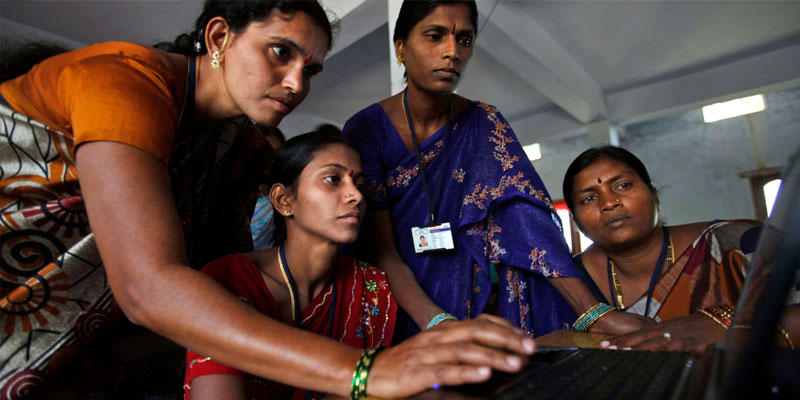The absence of any official Indian data on the unpaid drudgery work performed by women results in poor gender budgeting: Economists

Contesting data on poor work rate participation (WRP) among women data, as calculated by the Government of India, well-known Gujarat-based economist Indira Hirway, has said that, if calculated on the basis of latest methodology, men spend 27 per cent, while women spend 38 per cent of their time on work.
Revealing this in a book, “Mainstreaming Unpaid Work: Time Use Data in Developing Policies”, published by Oxford University Press (2017), and edited by her, Prof Hirway says, the methodology, time-use survey (TUS), being adopted across the world, takes into account “unpaid work”, or the work which does not give women any direct remuneration.
The book contains 10 researched articles by scholars, Indian and foreign, focusing on continued gender discrimination in data collection, whether it is Latin America, Africa or Asia-Pacific.
TUS, according to Prof Hirway, includes unpaid work that “falls within the production boundary of the System of National Accounts (SNA) as well as unpaid work that falls within the general production boundary but outside the production boundary (non-SNA)”.
While men’s share in SNA work is 67.89 per cent (in total person hours), it is 32.11 per cent for women, Prof Hirway, heads the Centre for Development Alternatives (CFDA), Ahmedabad, says, but adds, in non-SNA activities like free “collection of water, fuel wood, vegetables, fruits, and leaves) for meeting basic needs of the household”, women's share in India (both rural and urban) is 35.56 per cent, as against just 5 per cent of men.
“The total time spent on these activities also is much longer (3.11 hours per week) for participant women than for participant men (0.97 hours per week)”, calculates Prof Hirway, adding, “7.23 per cent of men and 9.27 per cent of women participate in some additional activities” like “animal grazing, making cow dung, collecting, storing, and stocking of fruits, woodcutting, and stocking of firewood.”
Terming all of it unpaid drudgery, Prof Hirway further says, “Women, on an average, spend 28.96 hours per week on household management, that is, taking care of the household”, which includes cooking (14.59 hours), cleaning and washing (7.89 hours), care of textiles (2.31 hours), childcare and care of the old, sick, or disabled in the household (4.47 hours).
In yet another research paper on India in the book, “Integrating Time Use in Gender Budgeting”, Lekha Chakraborty points to how the country’s gender budgeting policies often rest on a highly restricted assumption that “all public expenditure cannot be gender partitioned.”
Senior economist at the National Institute of Public Finance and Policy (NIPFP), an autonomous research institute of the Union Ministry of Finance, Prof Chakraborty says, TUS surveys indicate that “the value of unpaid activities could be as much as 26 to 28 per cent of the relevant state domestic product (SDP).”
“Compared to women, the valuation of unpaid activities by men was imited to only about 2–3 per cent of the SDP in these two states”, Chakroborty notes, adding, “The unpaid work, as a proportion of SDP, is as high as 49.93 per cent in Meghalaya and 47 per cent in Madhya Pradesh.”
She states, “The time-use statistics revealed that public expenditure on water schemes benefit women greater than men”, adding, “Applying the population proportion of time budget data, the benefit incidence of water expenditure is estimated. The figures clearly show that women benefit more from public expenditure on water.”
“If gender budgeting is predominantly based on the index-based gender diagnosis, a reanalysis of the construction of the gender (inequality) index is necessary to avoid a partial capture of gender diagnosis in budget policymaking”, she insists.
Courtesy: Counterview.net